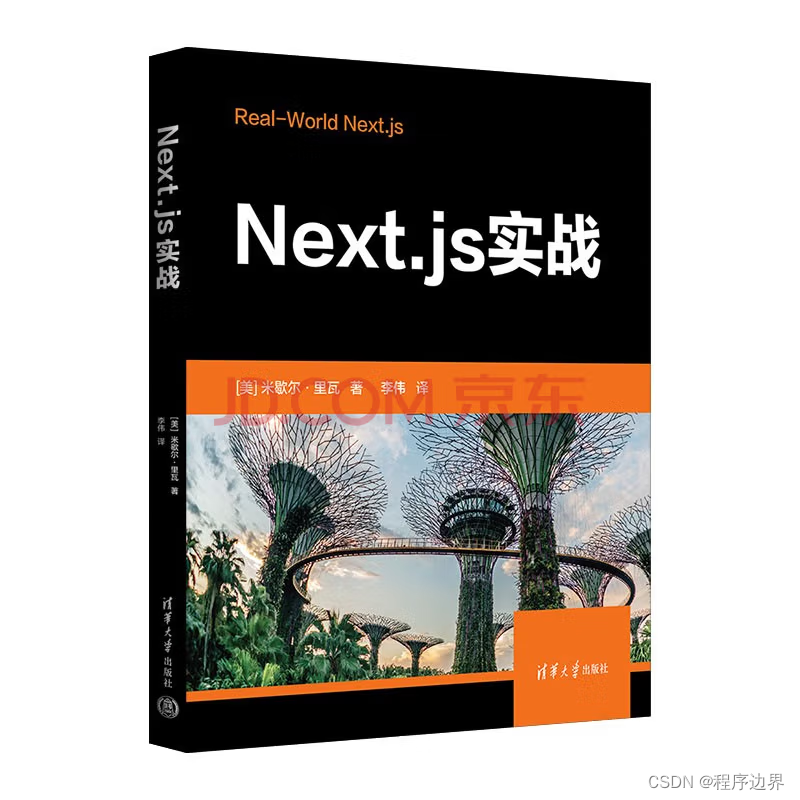热门标签
热门文章
- 1Java基于的美妆分享网站(开题+源码)_基于ssm的美妆分享网站
- 2解决ssh: connect to host slave1 port 22: No route to host
- 3liunx 安装 jdk_export java_home=/usr/local/java/jdk1.8.0_311 expo
- 4java web学习心得_javaweb课程的收获
- 5vue实现table自动滚动_vue实现tab标签(标签超出自动滚动)
- 6SQL学习笔记——Select查询语句
- 7世界顶级名校计算机专业,都在用哪些书当教材?_计算机硬件教材 国外课程
- 8分享一个不错的Windows软件——Fliqlo_fliqlo怎么样
- 9服务器发生意外响应 代码2,WebSocket连接到...失败:在WebSocket握手期间出错:意外的响应代码:200...
- 10一:BT、BLE版本说明及对比_bt ble
当前位置: article > 正文
【实战】流动的箭头 —— 线性流动组件(repeating-linear-gradient,@keyFrames)_前端流动箭头
作者:Monodyee | 2024-03-04 03:13:35
赞
踩
前端流动箭头
一、引子
在大屏数据展示中,若是按节点展示在不同数据层的数据时,为了形象体现数据的流动效果,需要让节点之间,层与层之间用流动的虚线+箭头连接。
二、组件思路
正常情况下,数据需要从上个节点底部出发到下个节点顶部结束,层与层之间传递需要经过汇总。因此水平方向上主要有两种情况:
- 底部汇总:数据流从外向里;(左侧从左往右,右侧从右往左)
- 顶部分散:数据流从里向外;(左侧从右往左,右侧从左往右)
偶尔会有特殊情况,比如:
- 同一层中两个节点数据是互相流动的,这就需要在两个节点之间使用双向箭头,且依据实际情况,其中一个可能不会有向下流动的数据只有与同层节点的数据交互,若此层刚好两个节点且为了美观保持对称(而非将带有向下流动数据的节点居中),此时数据流动会出现从左到右或从右到左的单向流动
- 同一层中还会有层级关系。。。(这个对数据流影响不大)
- 此思路在当前需求下够用了,后续有新需求再灵活变动
垂直方向上,无论是节点底部的小尾巴还是顶部的部分都是向下流动,而且由于与节点是强关联的,因此不需要单独封装出来到组件中
效果优化:
- 为保证起始位置不会出现“闪现”,虚线的出现一定是从 0 到 1 的过程,主要需要调整盒子内虚线在起始位置的偏移度,经过调整,最终确定偏移度最小为线段长度;
- 为保证动画的流畅性,动画结束时需要与动画开始时状态保持一致,主要调整整段虚线的动画位移距离和线段及之间间隔,最终确定最小位移距离为“线段长度+间隔”
三、效果图

四、源代码
src\components\flow-arrow\index.js
/* eslint-disable react/no-unknown-property */
/** @jsxRuntime classic */
/** @jsx jsx */
import { jsx } from '@emotion/react';
import keyFrames from './keyFrames'
import constant from './constant'
const { flowLen } = constant
/**
* 线性流动组件
* @param direction 方向:从左到右(lr);从右到左(rl);从里到外(io);从外到里(oi)
* @param place 位置:顶部(head);底部(foot)
* @description 方向和位置参数控制,顶部数据流发散(io),底部数据流汇聚(oi),具体显隐可参考如下(案例中:fo 是顶层;f3 是底层)
* - {floor.code --= 'f0'? null : <div className='flow-head'/>}
* - {floor.code --- 'f3'? null : <div className='flow-foot'/>}
* 其他特殊情况特殊处理(单独配置,强制传参改变方向)
*/
const containerStyle = {
...keyFrames,
'.flow-container': {
width: 'calc(100% - 24vh)',
height: '.5vh',
position: 'relative',
left:'12.8vh',
overflow: 'hidden',
},
".flow-head-container": {
top:'-.6vh',
},
".flow-foot-container": {
bottom:'-1.6vh',
},
".flow": {
width:'110%',
height: '.5vh',
// 第三个值 每个线段长度; 第四个值角度同向渐变距离; 第五个值 每个线段间隔
background: `repeating-linear-gradient(90deg, #e2e8fd 0, #e2e8fd ${flowLen}vh, rgba(0,0,0,0) ${flowLen}vh, rgba(0,0,0,0) ${flowLen}vh)`,
zIndex: 1,
},
'.flow-both-container':{
display:'flex',
},
'.flow-both': {
width:'51%',
overflow: 'hidden',
'.flow-rl': {
marginLeft: '-2vh'
},
},
'.flow-lr, .flow-rl,.flow-io, .flow-oi': {
background: `repeating-linear-gradient(90deg, #e2e8fd 0, #e2e8fd ${flowLen}vh, rgba(0,0,0,0) 0vh, rgba(0,0,0,0) ${flowLen * 2}vh)`,
},
'.flow-lr': {
animation: 'flow-lr linear 1s infinite',
marginLeft:'-2vh',
},
'.flow-rl': {
animation: 'flow-rl linear 1s infinite',
marginRight: '-2vh',
},
}
const index = (props = {direction: 'lr', place: 'head'}) => {
const { direction, place } = props
return <div css={containerStyle}>
<div className={`flow-container flow-${place}-container`}>
{
(() => {
switch (direction) {
case 'lr':
case 'rl':
return <div className={`flow flow-${props.direction}`} />
case 'io':
return <div className='flow-both-container'>
<div className={`flow-both`}>
<div className={`flow flow-head flow-rl`} />
</div>
<div className={`flow-both`}>
<div className={`flow flow-lr`} />
</div>
</div>
case 'oi':
return <div className='flow-both-container'>
<div className={`flow-both`}>
<div className={`flow flow-lr`} />
</div>
<div className={`flow-both` }>
<div className={`flow flow-rl`} />
</div>
</div>
default:
return <div className={`flow`} />
}
})()
}
</div>
</div>
}
export default index
- 1
- 2
- 3
- 4
- 5
- 6
- 7
- 8
- 9
- 10
- 11
- 12
- 13
- 14
- 15
- 16
- 17
- 18
- 19
- 20
- 21
- 22
- 23
- 24
- 25
- 26
- 27
- 28
- 29
- 30
- 31
- 32
- 33
- 34
- 35
- 36
- 37
- 38
- 39
- 40
- 41
- 42
- 43
- 44
- 45
- 46
- 47
- 48
- 49
- 50
- 51
- 52
- 53
- 54
- 55
- 56
- 57
- 58
- 59
- 60
- 61
- 62
- 63
- 64
- 65
- 66
- 67
- 68
- 69
- 70
- 71
- 72
- 73
- 74
- 75
- 76
- 77
- 78
- 79
- 80
- 81
- 82
- 83
- 84
- 85
- 86
- 87
- 88
- 89
- 90
- 91
- 92
- 93
- 94
- 95
- 96
- 97
- 98
- 99
- 100
- 101
- 102
src\components\flow-arrow\keyFrames.js
const keyFrames = {
'@keyFrames flow-lr': {
from: {
transform:'translateX(0vh)',
},
to: {
transform: 'translateX(4.8vh)',
}
},
'@keyFrames flow-rl': {
from: {
transform:'translateX(4.8vh)',
},
to: {
transform: 'translateX(0vh)',
}
}
}
export default keyFrames
- 1
- 2
- 3
- 4
- 5
- 6
- 7
- 8
- 9
- 10
- 11
- 12
- 13
- 14
- 15
- 16
- 17
- 18
- 19
- 20
src\components\flow-arrow\constant.js
const constant = {
flowLen: 1.2,
}
export default constant
- 1
- 2
- 3
- 4
- 5
组件调用
/* eslint-disable react/no-unknown-property */
/** @jsxRuntime classic */
/** @jsx jsx */
import { jsx } from '@emotion/react';
import FlowArrow from './components/flow-arrow/index'
function App() {
return (
<div className="App" css={{background: '#00f', height: '600px', 'h1': { textAlign: 'center' }}}>
<h1>左右</h1>
<FlowArrow direction='lr' place='head'/>
<h1>右左</h1>
<FlowArrow direction='rl' place='head'/>
<h1>内外</h1>
<FlowArrow direction='io' place='head'/>
<h1>外内</h1>
<FlowArrow direction='oi' place='head'/>
</div>
);
}
export default App;
- 1
- 2
- 3
- 4
- 5
- 6
- 7
- 8
- 9
- 10
- 11
- 12
- 13
- 14
- 15
- 16
- 17
- 18
- 19
- 20
- 21
- 22
五、拓展学习
1.repeating-linear-gradient
2.animation
animation 属性是 animation-name,animation-duration, animation-timing-function,animation-delay,animation-iteration-count,animation-direction,animation-fill-mode 和 animation-play-state 属性的一个简写属性形式。
3.@keyFrames
组件源码获取:
- 关注公众号:程序边界,输入 ‘程序边界 001’ !
- 直接下载:流动的箭头-线性流动组件(repeating-linear-gradient,@keyFrames)资源-CSDN文库
⭐️ 好书推荐
《Next.js实战》

【内容简介】
《Next.js实战》详细阐述了与Next.js框架相关的基本解决方案,主要包括Next.js简介、不同的渲染策略、Next.js基础知识和内建组件、在Next.js中组织代码库和获取数据、在Next.js中管理本地和全局状态、CSS和内建样式化方法、使用UI框架、使用自定义服务器、测试Next.js、与SEO协同工作和性能管理、不同的部署平台、管理身份验证机制和用户会话、利用Next.js和GraphCMS构建电子商务网站等内容。此外,本书还提供了相应的示例、代码,以帮助读者进一步理解相关方案的实现过程。
推荐阅读
相关标签


